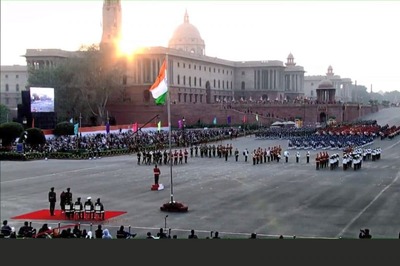
views
Urban design is evolving, and with cities facing mounting challenges like climate change, pollution, and population growth, there is a heightened responsibility to build spaces that are sustainable, resilient, and community-driven. Architects, urban designers, and planners are at the forefront of this transformation. They are tasked with not only responding to today’s demands but also preparing the next generation to lead this journey towards creating more sustainable urban environments.
Dikshu C. Kukreja, Managing Principal, CP Kukreja Architects, emphasizes the importance of involving young minds in shaping the future of urban design. According to him, “it is critical that we prepare the next generation to lead this revolutionary journey.” The topic of “Empowering the Next Generation to Participate in Urban Design” is particularly timely, as it highlights the need to educate future architects about sustainable practices, energy efficiency, and innovative mobility solutions. By equipping them with the tools and knowledge necessary to build greener cities, society ensures that progress can be balanced with environmental stewardship.
Sustainable architecture, as highlighted by Harsh Varshneya, Principal Architect, STHAPATI, is an “imperative” in addressing today’s environmental and social challenges. He stresses the importance of integrating green spaces within urban environments to promote biodiversity, replenish groundwater, and mitigate the heat island effect prevalent in densely populated areas. Varshneya advocates for green infrastructure—parks, urban forests, and green roofs—not just as aesthetic elements, but as vital components for improving both environmental conditions and the well-being of city dwellers. “Green infrastructure offers more than just environmental benefits—it plays a crucial role in improving city residents’ mental and physical well-being,” he adds.
Another important aspect of sustainable architecture is learning from traditional practices, particularly vernacular architecture, which is often rooted in climate-responsive and disaster-resistant building techniques. Varshneya calls for a fusion of “local building techniques with modern technology” to ensure urban spaces are equipped to face future uncertainties. This approach transcends energy efficiency by embedding resilience within the built environment.
Rachna Agarwal, Founder and Design Ideator, Studio IAAD, adds another layer to this discourse by emphasizing the efficient use of resources and the integration of design with the natural environment. For her, sustainable architecture is about more than constructing energy-efficient buildings; it’s about enhancing the well-being of occupants through the use of renewable or locally sourced materials and passive design strategies. “Biophilic design,” which connects people with nature by integrating plants, water features, and sunlight into buildings, is a cornerstone of sustainable urban living. This approach not only lowers energy consumption but also promotes mental well-being and productivity. As cities become more vulnerable to extreme weather events, Agarwal advocates for designing resilient structures and incorporating “green infrastructure like permeable pavements and rain gardens” to manage stormwater runoff, thereby reducing urban flooding.
Expanding on this vision of greener, more resilient cities, Anika Mittal Dhawan, Founder, Mold Design Studio, argues that transforming urban landscapes requires a comprehensive approach that focuses on both the environment and the community. Dhawan believes that expanding urban green spaces—such as parks and eco-friendly rooftops—can improve air quality, manage stormwater, and support biodiversity. Additionally, rethinking transportation systems is key to reducing the environmental footprint of cities. “Developing complete streets that prioritize pedestrians, cyclists, and public transit improves accessibility while reducing car dependency,” she notes. In some cities, car-free zones are being established, creating vibrant, walkable areas that foster community connections.
Dhawan also highlights the importance of engaging local residents in the urban design process. “Public forums, workshops, and feedback mechanisms” can ensure that urban developments align with community needs and priorities. Furthermore, sustainable practices at the individual level, such as promoting local food systems, can support health and reduce food miles, while community education on topics like recycling and energy conservation fosters a culture of environmental stewardship.
As cities continue to expand, the role of sustainable architecture becomes ever more essential. By integrating green spaces, embracing renewable materials, promoting passive design strategies, and involving local communities, architects are creating urban spaces that not only meet today’s needs but also safeguard the future. As Kukreja points out, by empowering the next generation to participate in this revolutionary journey, we are laying the groundwork for cities that balance progress with environmental responsibility.
Together, these visionary architects present a roadmap for the future—a future where cities are not just built, but cultivated with the health, sustainability, and resilience of their communities in mind.




















Comments
0 comment